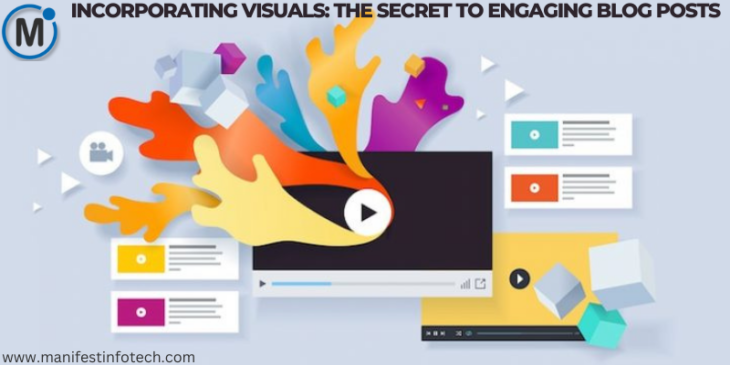
In the digital age, attention spans are shorter than ever. Readers skim through content quickly, deciding within seconds whether to stay or move on. One powerful way to capture and retain their interest is through the strategic use of visuals. Images, videos, infographics, and other multimedia elements not only enhance readability but also make blog posts more engaging, shareable, and memorable.
Why Visuals Matter in Blog Posts
1. Enhance Readability
Large blocks of text can be overwhelming, leading readers to lose interest. Breaking up content with relevant images, charts, or infographics makes it easier to digest. Visuals create natural pauses in the text, improving the overall reading experience.
2. Boost Engagement and Retention
Studies show that people remember 65% of the visual content they see compared to only 10% of what they read. This means that adding compelling visuals to your blog posts increases the chances of your message sticking with your audience. Videos, in particular, can be highly engaging, keeping visitors on your page longer and reducing bounce rates.
3. Improve SEO Rankings
Search engines love multimedia-rich content. Optimized images and videos can improve your SEO rankings by increasing dwell time and reducing bounce rates. Adding alt text to images and properly naming video files also boosts visibility on search engines, making your content more discoverable.
4. Encourage Social Sharing
Eye-catching visuals are more likely to be shared on social media platforms. A blog post with striking images or an informative infographic is more likely to go viral than one with plain text. Platforms like Pinterest and Instagram thrive on visual content, making it easier to reach a wider audience.
5. Establish Brand Identity
Custom visuals, such as branded graphics and unique photography, help establish your blog’s identity. They create a professional and polished look, making your content recognizable and reinforcing your brand message.
How to Effectively Use Visuals in Blog Posts
1. Choose High-Quality Images
Avoid blurry or pixelated images. Use high-resolution visuals that are relevant to your content. Websites like Unsplash, Pexels, and Pixabay offer royalty-free images for blog use.
2. Use Infographics to Simplify Complex Information
If you’re explaining statistics or complex ideas, an infographic can make the information more digestible. Tools like Canva and Piktochart help create stunning infographics easily.
3. Embed Videos for Higher Engagement
Videos can be used to demonstrate products, provide tutorials, or share interviews. Embedding relevant YouTube or Vimeo videos can enhance user experience and increase time spent on your page.
4. Optimize for Faster Load Times
Large media files can slow down your website, affecting user experience and SEO. Compress images and videos using tools like TinyPNG and HandBrake to maintain quality without compromising speed.
5. Ensure Accessibility
Use alt text for images to help visually impaired users understand the content. Also, ensure that videos have captions for those who may not be able to listen to the audio.
Final Thoughts
Incorporating visuals into your blog posts is no longer optional—it’s essential. Engaging visuals enhance readability, improve SEO, boost retention, and make content more shareable. Whether through images, videos, or infographics, integrating multimedia elements will elevate your blog’s impact, helping you attract and retain a wider audience.
If you are looking for any services related to Website Development, App Development, Digital Marketing and SEO, just email us at nchouksey@manifestinfotech.com or Skype id: live:76bad32bff24d30d
𝐅𝐨𝐥𝐥𝐨𝐰 𝐔𝐬:
𝐋𝐢𝐧𝐤𝐞𝐝𝐢𝐧: linkedin.com/company/manifestinfotech
𝐅𝐚𝐜𝐞𝐛𝐨𝐨𝐤: facebook.com/manifestinfotech/
𝐈𝐧𝐬𝐭𝐚𝐠𝐫𝐚𝐦: instagram.com/manifestinfotech/
𝐓𝐰𝐢𝐭𝐭𝐞𝐫: twitter.com/Manifest_info
#ContentMarketing #BloggingTips #SEO #VisualContent #DigitalMarketing #SocialMedia #Engagement #MarketingStrategy